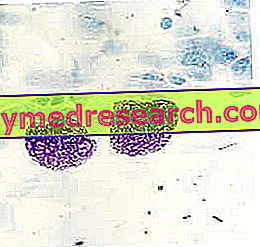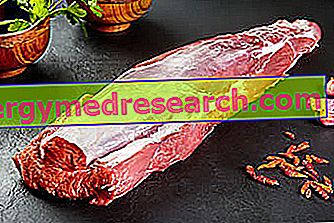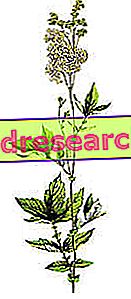Generality
Mast cells, or mast cells, are immune cells of variable form, in some cases round or oval, in others branched. Inside the mast cells, in the cytoplasm, there are granules rich in heparin and histamine.

Thanks to the particular affinity with certain dyes, the content of the granules is exploited for their display under the microscope: they appear red-purple. Mast cells are found in the connective tissue proper, of the loose fibrillar type.
Origin
Discovered by Paul Ehrlich, mast cells originate in the bone marrow, during hematopoiesis. Haemopoiesis (or hematopoiesis) is the process by which all types of cells present in the blood are formed and mature. The term derives from the union of the Greek words αίμα, which means blood, and and ποιὲω, which means to create.
Due to their similarity, the mast cells were confused for a long time with basophils.
Location
The connective tissue is one of the four fundamental tissues of the body, together with the epithelial, muscular and nervous tissue.
It is useful to remember the structure of connective tissue to better understand some properties and functions of mast cells; this fabric:
- it is composed of various cell types: macrophages, fibroblasts, plasma cells, leukocytes, mast cells, undifferentiated cells, adipocytes, chondrocytes, osteocytes etc.
- it has a particular component, called intercellular material (or matrix) : it consists of insoluble protein fibers (collagen, reticular and elastic) and of a fundamental substance, or amorphous, of colloidal and mucopolysaccharidic type. Exchanges of gas and nutrients take place between the blood and connective cells.
- It mainly performs two functions: mechanical and trophic. By mechanics we mean the action of support, scaffolding and connection, which this tissue guarantees in the body. The trophic function (from the Greek Ïτροϕή, nutrition), on the other hand, results in the presence of blood vessels, capillaries and lymphatic vessels, through which exchanges of nutrients take place.
Mast cells concentrate mainly near the blood and lymphatic vessels of the loose fibrillar connective tissue. Furthermore, a high number of mast cells is also present in the mucous membranes of the respiratory tract and gastrointestinal tract.
Cytology and function of the granules. inflammation
The mast cells measure about 20-30 µm in diameter. Within them, mitochondria are scarce in number and small in size. The Golgi apparatus is well differentiated. From the latter originate the granules (0.3-0.8 µm in diameter), containing heparin and histamine. Furthermore, there are also lipid drops, or lipid bodies, containing reserves of arachidonic acid.
Delimited by a fine membrane, the granules are very numerous and appear, therefore, crammed, so that in some cases they also cover the nucleus of the mastocyte. The granule content, in particular heparin, has affinity for particular basic dyes, such as toluidine blue, which allows the visualization of mast cells under a microscope.
The content of the granules of the mast cells is released, after very precise signals, outside the cells. This process is called mast cell degranulation.
- Heparin is a sulfur dioxide mucopolysaccharide with anticoagulant properties. The mast cells, near the blood vessels of the loose connective tissue, release heparin in order to avoid the coagulation of the plasma proteins that escaped from the blood capillaries. In other words, they monitor and check that an improper coagulation process does not occur.
- Histamine, on the other hand, is a vasoactive, or vasodilator. Thus, histamine degranulation results in increased vascular permeability in neighboring blood vessels.
The release of histamine is linked to the role that mast cells have in the inflammatory process: they, in fact, perform histamine degranulation as soon as an inflammatory situation occurs. The increase in vascular permeability has the purpose of favoring the influx of other immune cells (eosinophils, neutrophils, monocytes, T lymphocytes) and platelets to attack the pathogen (in an infection) or an antigen.
However, it may happen that in highly predisposed subjects the massive degranulation of mast cells triggers an exaggerated allergic type reaction, called an anaphylactic reaction . In this case we speak of anaphylactic degranulation . The affected subject has different symptoms, such as:
- itch
- Dyspnoea
- Urticaria
- Sense of suffocation
- Hypotension
- Fainting
- Dizziness
- Polyuria
- palpitations
This situation, considered pathological, occurs because the mast cells have IgE immunoglobulins (or reagines) on their membrane, which, coming into contact with the antigen (in this case it is an allergen), trigger a release uncontrolled histamine.
The "abnormal" presence of IgE on the mast cell membrane is not accidental: they are present on the membrane only after a first exposure, by the predisposed organism, to the allergen. In this case, we talk about sensitization of mast cells to the antigen. In other words, the following situation occurs: when an individual, more receptive than normal, comes into contact, for the first time, with a given allergen, the immune response consists of the over-production of specific IgE. Once the first exposure to the allergen is exhausted, the IgE sensitive to the latter are fixed on the plasma membrane of the mast cells. At the second exposure to the same antigen, the IgE, already prepared, trigger the uncontrolled degranulation of histamine. This process is defined as anaphylactic hypersensitivity and is one of the inflammatory / allergenic reactions.
This explains why, in cases of anaphylactic reactions, antihistamine drugs are administered.
Mast cells and inflammation: the complete picture
To complete this overview on the role of mast cells during the inflammatory process, it must be said that, on the scene, other protagonists intervene:
- Lipid bodies, containing arachidonic acid.
- Interleukins.
- Chemotactic factors.
- Nitric oxide.
Arachidonic acid, contained in the lipid bodies of mast cells, is a precursor of numerous substances involved in inflammatory processes, such as prostaglandins, thromboxanes and leukotrienes. In mast cells, when the immune response to the antigen is triggered, besides degranulation, leukotrienes are also produced, the effects of which are as follows:
- Increased vascular permeability.
- Smooth muscle contraction.
The leukotrienes therefore act as chemical mediators and support the action carried out by histamine in fighting antigens.
Interleukins and chemotactic factors regulate the activity of other cells that participate in the regulation of the inflammatory process. In particular, chemotaxis refers to a process in which an attraction of mobile cells (such as neutrophils, basophils, eosinophils and lymphocytes) towards chemicals takes place. Thus, a release of chemotactic factors by mast cells recalls other immune cells.
Finally, nitric oxide is another endogenous mediator produced by the mastcell by means of an enzymatic system called NOS, nitric oxide synthase. Released to the outside, this gas has a vasodilating action.
As with histamine, however, even these other elements of mast cell origin can determine, in certain individuals, an abnormal response to the antigen. In asthmatic crises, for example, it is the massive contraction of smooth muscles, induced by some leukotrienes contained in mast cells, which induce bronchoconstriction triggering the typical symptomatology.



